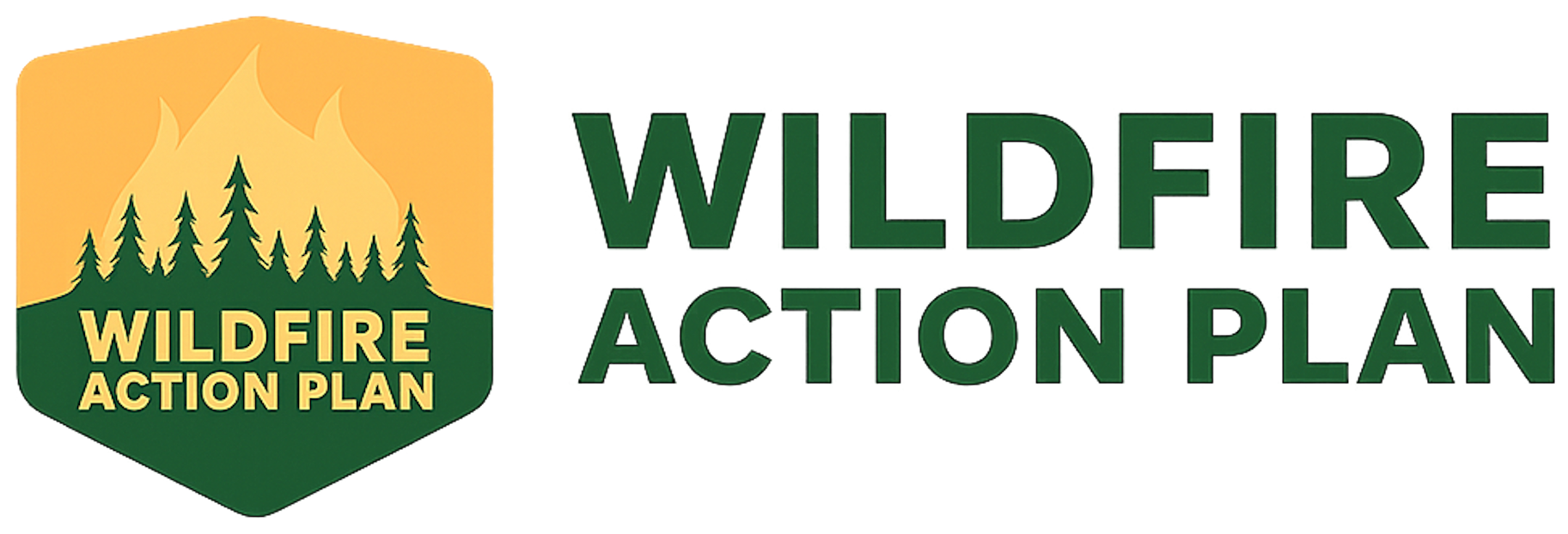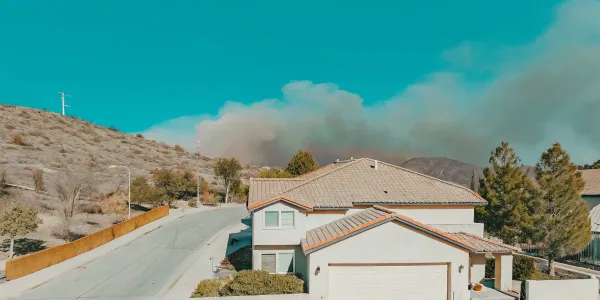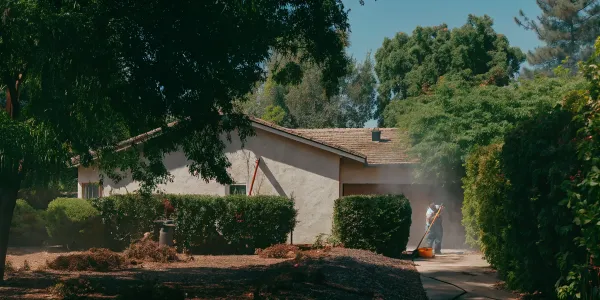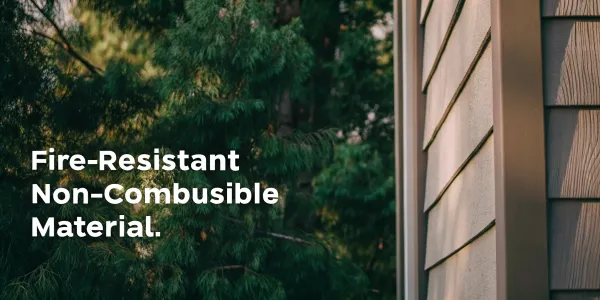Is Fire Insurance Required in California? A Guide for Homeowners
Get clear answers to “is fire insurance mandatory in California” and learn what lenders, HOAs, and insurers require to protect your home and finances.
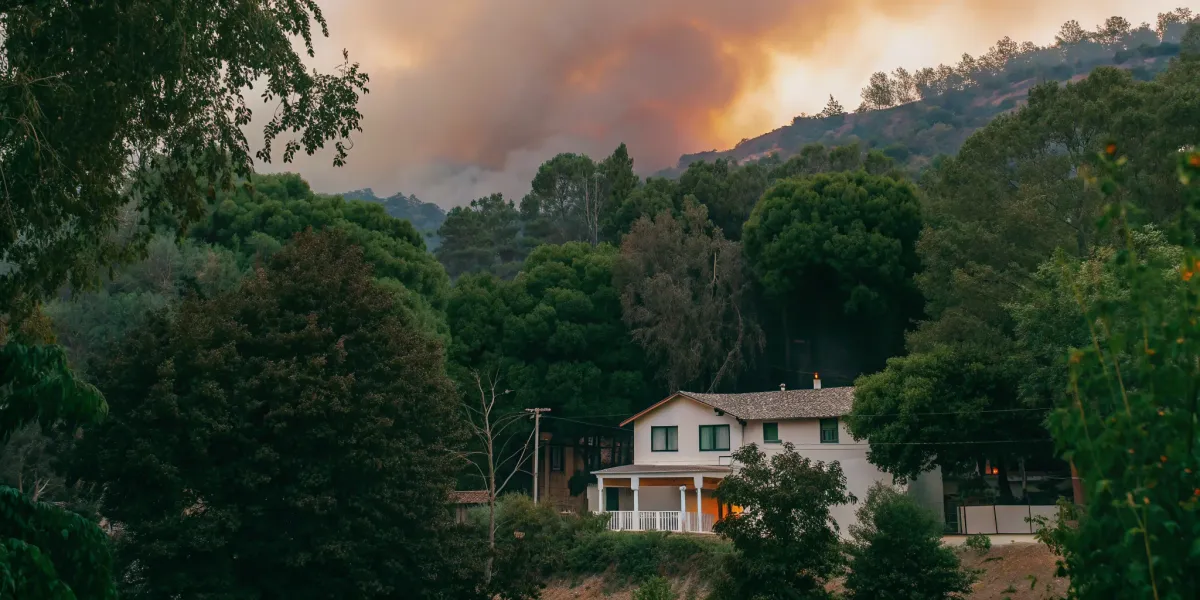
A letter from your insurance company can change everything. One day you’re a homeowner, the next you’re scrambling to find coverage in a market that seems to have shut its doors. In the middle of this chaos, you start asking fundamental questions, like “Is fire insurance mandatory in California?” You need to know the baseline rules before you can figure out your next move. While no state law forces you to have it, your mortgage agreement almost certainly does. This distinction is critical. It’s the starting point for understanding your options, from the FAIR Plan to surplus lines, and for taking back control.
Key Takeaways
- Your Lender Sets the Rules, Not the State: While California doesn't legally require fire insurance, your mortgage agreement almost certainly does. This makes coverage a non-negotiable for most homeowners, as lenders require it to protect their investment.
- Your Mitigation Efforts Now Legally Matter: Thanks to new regulations, insurers must account for the proactive steps you take to reduce wildfire risk. Meticulously document your defensible space and home hardening upgrades to prove your property is a lower risk and qualify for the discounts you've earned.
- Know Your Backup Insurance Plan: If you're non-renewed, the California FAIR Plan is your safety net for fire damage. Remember that it's not a complete policy—you'll need to pair it with a separate Difference in Conditions (DIC) policy to cover essentials like theft and liability.
Is Fire Insurance Legally Required in California?
Let’s get straight to the point: No California state law says every homeowner must have fire insurance. But that simple answer doesn't capture the full picture. For the vast majority of homeowners, fire insurance isn't just a good idea—it's a non-negotiable requirement from your mortgage lender. The gap between the legal rule and the practical reality is where many homeowners find themselves confused and frustrated.
Understanding these requirements is the first step toward taking control. Once you know who requires coverage, you can build a clear strategy to protect your home and finances. Start by assessing your property's specific risk with a free Wildfire Action Plan to see what actions will make the biggest impact.
The Legal Rule vs. The Practical Reality
While the state won’t penalize you for not having fire insurance, this freedom usually only applies if you own your home outright. If you have a mortgage, the practical reality is that insurance is mandatory. Your lender requires it to protect their investment, making it a de facto requirement for most Californians. This means you must find and maintain coverage to comply with your loan agreement, even in a difficult market. While you won't face legal trouble from the state, you could face serious consequences from your lender if you let your policy lapse.
What Your Mortgage Lender Demands
Your mortgage lender has a significant financial stake in your property. They require you to maintain a homeowners insurance policy with fire coverage to protect that investment. If a wildfire destroys your home, the insurance payout ensures there are funds to rebuild or pay off the loan. This requirement is a standard clause in nearly every mortgage agreement. If you fail to maintain coverage, your lender can purchase a policy on your behalf—called force-placed insurance—and charge you for it. This type of policy is often far more expensive than one you would find on your own.
What Your HOA or Community Requires
Even if you own your home without a mortgage, you might still be required to carry insurance. Many Homeowners Associations (HOAs) have bylaws that mandate homeowners insurance for all residents, especially in condominiums and planned communities. This rule exists because one home’s risk can affect the entire neighborhood, and the HOA wants to ensure a fire at one property doesn't financially devastate the community. Always check your HOA’s governing documents to understand your specific obligations. Ignoring these rules could lead to fines or other penalties from your association.
What Are the Gaps in a Standard Policy?
It’s critical to understand that not all fire insurance is created equal. A standard policy might not cover everything you assume it does. For example, coverage for outdoor structures like fences, sheds, and landscaping is often limited or excluded unless you purchase additional protection. Furthermore, last-resort policies like the California FAIR Plan primarily cover damage from fire and smoke, not theft or liability. To fill these gaps, you often need to buy a separate Difference in Conditions (DIC) policy to get more complete protection for your property.
Your Fire Insurance Options in California
Finding fire insurance in California can feel like a full-time job, especially if you’ve been non-renewed or are facing staggering premium hikes. The market is shifting quickly, but you still have options. Understanding what’s available is the first step toward finding the right protection for your home and family. It’s important to know the differences between standard policies, last-resort plans, and specialty insurers so you can make an informed choice.
Your goal is to find coverage that not only satisfies your mortgage lender but also gives you genuine peace of mind. Let’s walk through the main types of fire insurance available to California homeowners.
Standard Homeowners Insurance
This is the traditional, all-in-one policy most people think of when they hear "home insurance." A standard policy typically bundles several types of coverage together, including protection for your house itself, your personal belongings, and liability in case someone is injured on your property. Most importantly, these plans almost always cover damage from fire, including wildfires.
The problem is that in many high-risk areas, standard insurers are pulling back. They are non-renewing policies and declining new applications to reduce their exposure to catastrophic wildfire losses. If you can get a standard policy from a mainstream carrier, it often provides the most comprehensive coverage. However, for a growing number of Californians, this option is no longer on the table, forcing them to look at alternatives.
The California FAIR Plan
If you’ve been turned down by multiple private insurers, you’ll likely be pointed toward the California FAIR Plan. It’s crucial to understand what the FAIR Plan is—and what it isn’t. It is a state-mandated insurance pool designed as a "last resort" for homeowners who can't get fire coverage anywhere else. It provides basic, fire-only insurance for your home's structure.
However, a FAIR Plan policy is not a replacement for a standard homeowners policy. It does not cover theft, water damage, or liability. To get that level of protection, you will need to purchase a separate "Difference in Conditions" (DIC) policy from a private insurer to wrap around the FAIR Plan’s fire coverage. This two-policy approach is often more expensive and complicated, but for many, it’s the only way to stay insured.
Surplus Lines Insurance
Between standard insurers and the FAIR Plan, there is another category: surplus lines insurance. These are private insurance companies that specialize in covering high-risk properties that standard carriers won’t touch. Because they take on greater risk, they are less regulated by the state, which gives them more flexibility in setting their rates and coverage terms.
This flexibility can be both a good and a bad thing. On one hand, a surplus lines carrier might be willing to insure your home when no one else will. On the other, the premiums are often significantly higher, and the policies may have different terms than you’re used to. If you’re considering this route, it’s essential to work with a knowledgeable insurance broker who can help you find a reputable carrier and understand the fine print of your policy.
Additional Living Expenses (ALE) Coverage
Additional Living Expenses, or ALE, is a critical component of any fire insurance policy. This coverage pays for temporary costs if you’re forced out of your home due to fire damage. It covers expenses like hotel bills, rent for a temporary apartment, and even the cost of meals while your home is being repaired or rebuilt.
While ALE is standard in most traditional homeowners policies, it’s something you need to pay close attention to with other plans. For example, the basic FAIR Plan does not automatically include it; you have to add it on. Imagine being displaced by a wildfire and having to cover all your living costs out of pocket. Make sure you review your policy to confirm you have adequate ALE coverage—it can be a financial lifesaver during a crisis.
How Wildfire Risk Impacts Your Insurance
Understanding how insurers view your property is the first step toward gaining control over your coverage and costs. Insurance companies don't just look at your house; they analyze its entire environment to predict the likelihood of a wildfire claim. This risk assessment directly influences whether you can get coverage, which company will offer it, and how much you’ll pay.
Factors like your property’s slope, the type of vegetation surrounding it, and its proximity to historical fire zones all play a role. But the landscape is changing. New regulations in California are beginning to shift the power dynamic, forcing insurers to account for the proactive steps you take to protect your home. This means your mitigation efforts—the work you put into making your home safer—can have a real impact on your insurance options. By understanding their process, you can focus on the improvements that matter most and demonstrate to insurers that your property is a lower risk.
How Insurers Calculate Your Risk
Insurers use sophisticated wildfire risk models that analyze dozens of data points to generate a risk score for your property. This score considers your home's specific location, local weather patterns, surrounding fuel sources like trees and brush, and the overall topography. In the past, this process felt like a black box, leaving homeowners with little recourse if they were deemed "high-risk."
However, a significant change came with California's Mitigation in Rating Plans and Wildfire Risk Models regulation. This rule requires insurance companies to factor your specific mitigation efforts into their pricing. This means the fire-resistant roof you installed or the defensible space you cleared must now be considered when they set your premium. It’s a critical shift that makes your proactive safety measures more valuable than ever.
How to Know if You're in a High-Risk Zone
The most direct way to understand your property's official risk level is by checking the maps created by the California State Fire Marshal. These maps designate Fire Hazard Severity Zones, classifying areas as having Moderate, High, or Very High wildfire risk. Your local government may also have its own hazard maps that provide additional detail.
You can visit the CAL FIRE website to see the designation for your area. Knowing your zone is crucial because it heavily influences insurance decisions. If you are in a High or Very High-risk zone, you may find it harder to secure a policy from a standard carrier, which could lead you to explore alternatives like the California FAIR Plan.
Why Your Premiums Are So High
If you’ve been shocked by a recent insurance bill, you’re not alone. Premiums are rising sharply across California and other fire-prone states for a straightforward reason: the cost of wildfire damage has become astronomical. In recent years, catastrophic wildfires have resulted in billions of dollars in insured losses, forcing insurance companies to re-evaluate their financial exposure.
To remain solvent, insurers are raising rates to cover these massive potential payouts. In many cases, they are also choosing to non-renew policies in areas they deem too risky, reducing the overall supply of insurance and driving prices even higher. Your premium reflects not just the risk of your individual home, but the collective risk of your entire community and state.
What Protection Measures Insurers Require
While there isn't a single, universal checklist that guarantees coverage, insurers are increasingly focused on specific home hardening and defensible space measures. Thanks to the new regulations, they must provide discounts or credits for these actions. The goal is to create a home that can resist ignition from embers and a surrounding property that won't fuel a fire.
Key measures that insurers look for include:
- Class A Fire-Rated Roofing: Materials like composite shingles, metal, or tile that are resistant to fire.
- Ember-Resistant Vents: Installing fine mesh screens over attic and crawl space vents to block flying embers.
- Defensible Space: Creating an "ember-free zone" within the first five feet of your home and managing vegetation in zones extending out to 100 feet.
Taking these steps is the most effective way to protect your property and improve your insurability. A comprehensive Wildfire Action Plan can help you identify and prioritize the most impactful upgrades for your home.
How to Get—and Keep—Your Insurance Coverage
Facing the insurance market in a high-risk fire area can feel defeating, but you have more control than you might think. Insurers are looking for homeowners who are actively reducing their property’s wildfire risk. By taking clear, strategic steps, you can make your home a more attractive, less risky property to insure. It’s about showing providers that you are a proactive partner in protecting your home. Here are the essential actions you can take to improve your chances of getting and keeping coverage.
Evaluate Your Property's Wildfire Risk
Before you can protect your home, you need to understand your specific threat level. Wildfire risk isn’t uniform; it varies based on your location, local topography, vegetation, and weather patterns. With thousands of wildfires burning millions of acres in California in recent years, it's easy to feel overwhelmed. The first step is to move past general anxiety and get a clear-eyed view of your situation. A detailed wildfire risk assessment can pinpoint your property’s vulnerabilities, giving you a concrete starting point and allowing you to focus your time and money on the mitigation efforts that will have the greatest impact.
Create Defensible Space Around Your Home
Defensible space is your property’s first line of defense. It’s a buffer zone you create between your home and the surrounding vegetation that can slow or stop a wildfire from reaching your structure. This is one of the most critical—and often required—actions by insurers. Start with the area immediately around your home, known as Zone 0 or the ember-resistant zone (0-5 feet). California law requires this area to be free of flammable materials. This means clearing away dead leaves, moving woodpiles, and choosing non-combustible materials like gravel or pavers instead of bark mulch right next to your foundation.
Make Fire-Resistant Home Upgrades
Strengthening your home itself, a process often called "home hardening," is another key factor for insurers. These upgrades are designed to help your house withstand ignition from flying embers, which are a primary cause of home loss during a wildfire. Focus on the most vulnerable parts of your structure. This could mean replacing a wood shake roof with a Class A fire-rated material like metal or tile, installing dual-pane tempered glass windows, and covering attic vents with fine metal mesh to block embers. While these projects can be significant investments, they directly reduce your home’s risk of ignition and are highly valued by insurance providers.
Document Your Mitigation Efforts
If you do the work, make sure you get credit for it. Meticulously documenting every mitigation effort you undertake is essential when communicating with your insurance company. Take clear before-and-after photos of your defensible space clearing. Keep all receipts and invoices for fire-resistant materials you purchase or for professional services you hire, like tree trimming or roof replacement. Organize these records into a single file you can easily share with an insurance agent or adjuster. This portfolio of proof demonstrates your commitment to risk reduction and provides the tangible evidence insurers need to justify offering or renewing your policy.
Qualify for Insurance Discounts
Your proactive efforts can translate directly into savings. In California, insurers are now required to offer discounts for homeowners who take recognized steps to mitigate wildfire risk. The documentation you’ve gathered is your ticket to qualifying for these programs. When speaking with your current or a potential insurer, present your file of receipts and photos and specifically ask about their wildfire mitigation discounts. While the savings for a single action might seem small, they can add up. More importantly, qualifying for these discounts signals to the insurer that your property is a lower risk, which is the ultimate goal for maintaining your coverage long-term.
How to Manage High Insurance Costs
Seeing your insurance premium skyrocket or receiving a non-renewal notice can feel overwhelming and unfair. The financial pressure is real, but you aren't powerless. Understanding what’s driving these costs is the first step toward finding solutions that can protect your home and your budget. By taking a proactive approach, you can find ways to manage high premiums and make your property more attractive to insurers. It’s about shifting from reacting to the insurance market to taking clear, strategic actions to secure your home’s future.
What Drives Up Premiums in High-Risk Areas?
The simple answer is risk. California’s landscape and climate contribute to frequent and severe wildfires, and insurers see properties in these areas as more likely to result in a claim. To offset that financial risk, they charge higher premiums. If your home is located in a designated high-risk zone, an insurer might also require a higher deductible or, in some cases, refuse to offer a policy at all. This isn't personal; it's a business calculation based on location, historical data, and the projected likelihood of a wildfire impacting your neighborhood. Understanding this helps you focus on what you can control: the risk profile of your specific property.
Check Your Coverage Limits and Exclusions
Before you do anything else, pull out your current policy and read it carefully. Your coverage limit is the maximum amount the insurer will pay to rebuild your home. Is it enough to cover today’s construction costs? Also, look for exclusions—things your policy doesn’t cover. This is especially critical if you have a California FAIR Plan policy, which provides basic fire coverage but often excludes things like theft, liability, or water damage. To get comprehensive protection, you’ll likely need to purchase a separate "Difference in Conditions" policy to fill those gaps, so be sure to factor that into your budget.
Find Ways to Lower Your Insurance Bill
This is where you can make the biggest impact. Taking concrete steps to protect your home from wildfires can directly influence your ability to get—and afford—insurance. Insurers want to see that you’ve reduced their risk. This means creating defensible space by clearing flammable vegetation and debris around your home, especially within the first five feet. Upgrades like installing a Class A fire-rated roof, ember-resistant vents, and double-paned windows also matter. A personalized Wildfire Action Plan can help you identify the most effective mitigation measures for your property and document them to show insurers you’re serious about safety.
Explore Alternative Insurance Solutions
If you’ve been non-renewed and can’t find coverage on the standard market, you still have options. The California FAIR Plan is designed as an insurer of last resort, providing essential fire coverage when other companies won’t. Another route is surplus lines insurance. These carriers are not regulated by the state in the same way as standard insurers, which allows them to take on higher risks. While often more expensive, a surplus lines policy can be a viable solution for homeowners in high-risk areas. An independent insurance broker can help you determine which of these alternatives is the right fit for your situation.
Understand Your Payment Options
Even after taking steps to lower your risk, your premium may still be a significant expense. Don’t hesitate to talk to your agent about payment structures. Many insurers offer monthly or quarterly payment plans that can make the cost more manageable than a single lump-sum payment. While no one wants to pay high premiums, it’s important to remember that the cost of insurance is almost always far less than the devastating financial blow of rebuilding your home from scratch. Having coverage is the ultimate financial protection against a total loss from wildfire.
Related Articles
Frequently Asked Questions
My insurance company dropped me, but my neighbor kept their policy. Why? This is a frustratingly common situation, and it usually comes down to individual risk scores. Insurers use complex models that look at dozens of factors specific to each property, not just the general neighborhood. Your home might have a steeper slope, different types of vegetation closer to the structure, or an older roof. Even small differences can result in a different risk calculation, leading one home to be non-renewed while the one next door keeps its coverage.
What's the most important thing I can do to make my home insurable? If you do only one thing, focus on creating an "ember-free zone" in the first five feet around your home's foundation. This is often called Zone 0. Embers are the primary way homes ignite during a wildfire, so clearing this immediate area of flammable mulch, dead leaves, and woodpiles is the single most effective action you can take. It's a requirement under California law and something every insurer looks for as a sign of a well-maintained, lower-risk property.
Will I actually save money on my insurance if I do all this work? Yes, you can, though the savings might not be dramatic overnight. California now requires insurers to offer discounts for specific wildfire mitigation efforts, like installing a Class A roof or creating defensible space. While a single discount may be small, they can add up. More importantly, these actions make your home fundamentally less risky, which is the key to maintaining coverage and avoiding the high costs of last-resort policies in the long run.
Is the California FAIR Plan a good long-term solution? The FAIR Plan is a critical safety net, not a permanent solution. It provides essential, fire-only coverage when you can't find it anywhere else, ensuring you meet your mortgage requirements. However, it isn't comprehensive. You'll still need to buy a separate policy to cover things like theft and liability, which can be costly and complicated. The best strategy is to use the FAIR Plan as a temporary bridge while you work on reducing your home's risk to hopefully qualify for a standard policy again.
My mortgage requires fire insurance, but I can't find any. What are my next steps? First, take a deep breath. Your immediate goal is to avoid having your lender force-place an expensive policy on your behalf. Start by contacting an independent insurance broker who specializes in high-risk properties; they have access to carriers you may not find on your own, including surplus lines insurers. If that doesn't work, apply for the California FAIR Plan immediately to secure basic fire coverage. This will satisfy your lender while you continue to explore more comprehensive options.
